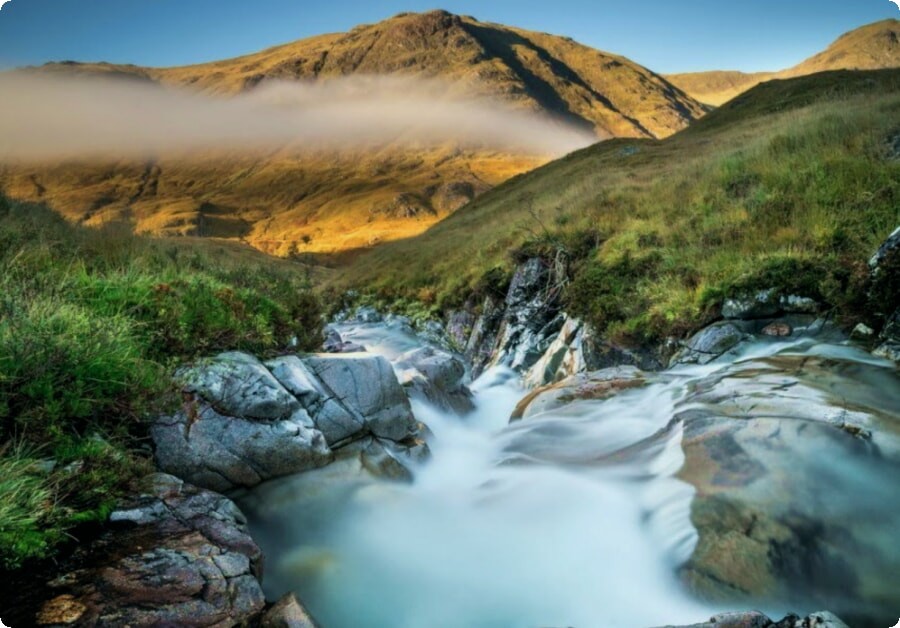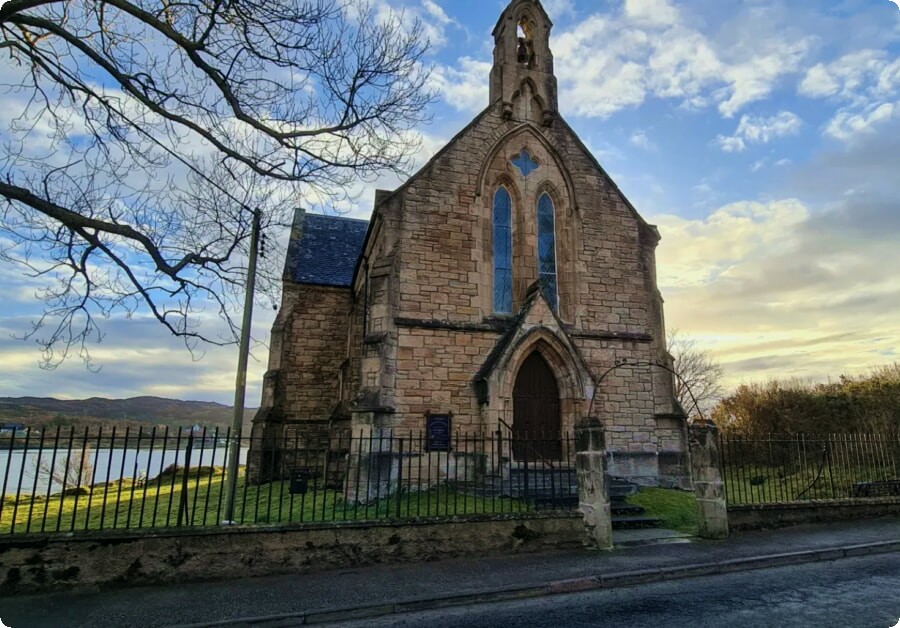Stereotypical images of Scotland include red hair, men in skirts, bagpipes, whiskey, rain, brooding mountain scenery, castles, intricate history, freedom and patriotism.
A beautiful country with unpredictable weather, rugged landscapes, deep lakes, strange customs and interesting architecture. To see wild landscapes, it is not necessary to go to the other side of the world.
For a comfortable trip, many tourists prefer to use car rental services in Scotland. The average cost of renting a car in Edinburgh is 24 euros per day, at the airport the cost of renting a car is the same as in the city, although it is usually cheaper to rent a car at the airport.

Land of two cities
Edinburgh International Airport can be the starting point of your trip. There is a car rental office right behind it, but it is better to book a car in advance. Don't forget about driving on the left, as well as the weird roundabouts that are popular in big cities.
The capital Edinburgh is undoubtedly the pearl of the north: photogenic nature, bloody history and festival traditions. The medieval castle, the old town, the extinct volcano and the seaside create the perfect backdrop. If museums and galleries are your thing, there's plenty to go: a tour of a castle, a spooky dungeon, a botanical garden, or the royal yacht Britannia are just some of the cosmopolitan city's many attractions.
To the west is Glasgow, a more Scottish city with a reputation for being both rough and friendly and with a vibrant cultural life that has been compared to London.
Glasgow will appeal to lovers of music, modern architecture, technical inventions, shopping or sports, namely football, which is taken very seriously here. Football fans are easy to spot in any pub. It is here that the friendliness and curiosity of local residents, the ability to complain about many things, as well as the notorious patriotism, are manifested. Beware, however, of a certain cunning and a certain irascibility of the Scots, especially after a few beers. In their own words, you will not find more loyal friends and more inveterate enemies than they are.

Edinburgh and Glasgow are in the central belt. In the south, border Scotland: characterized by an undulating landscape dotted with small towns and villages, but if tourists wish to get acquainted with the untouched and mysterious part, then you need to go north.
Journey north
On the way, it is not recommended to miss Stirling with its monuments to William Wallace and King Robert the Bruce, the heroes of the Scottish Wars of Independence. Golf lovers should visit St. Andrews, the cradle of this sport. Moored in Dundee is the sailing ship Discovery, on which Highland Captain Scott made a scientific expedition to Antarctica in 1900. The list goes on and on: castles, distilleries, stone circles, famous battlefields.
For many, the main reason for traveling north is the muse of adventurers - the Scottish Highlands, a dramatic and human landscape of majestic mountains, hidden valleys, wildlife, strange stories and inclement weather. It is here that the dark waters of Loch Ness, the highest mountain in the UK, Ben Nevis (1,344 m) and a paradise for adrenaline sports enthusiasts, are located.

The locals are very hospitable, sometimes you can hear the Gaelic language. They prefer playing synth (the forerunner of modern hockey) to football, they love gin with a live band in the pub. A unique experience is visiting the traditional games where men of Scottish descent compete in a variety of strength disciplines.And if you get to the end of the road, just hop on a ferry and visit one of the many islands to the west and north of the Scottish mainland. A must see is the Isle of Skye, which offers fantastic scenery and is the only island connected to the mainland by a bridge. However, you can go much further and see many other aspects of the country along the way.
Every traveler will find a thousand reasons to come to Scotland and not be disappointed with their visit. On the contrary, they will be rewarded with unforgettable experiences, memories of a lifetime and often a desire to return again.

Accommodation
The main tourist season in Scotland lasts from June to the end of September. Outside of this time, many hostels and other types of accommodation are closed. You will find several types of accommodation. Campsites and hostels are recognized as the cheapest. There is plenty of both. If you are planning a trip for the summer, book accommodation (except campsites) in advance. Especially if you're going to the busiest places like the Isle of Skye.You can camp anywhere in Scotland as long as it's not a fenced area and for one night only. Don't forget to clean up after yourself. However, in the south, most of the land, as a rule, is fenced (these are pastures), unfenced areas are marshy swamps.
Hostels are of various designs, offering mostly shared rooms and possibly a few doubles rooms with breakfast. The middle price category is represented by B&B, private accommodation with a private room. The bathroom can be both separate and shared in the hallway. The highest price category is guest houses and hotels.

Essentials for traveling around the country
An important part of your equipment should be a raincoat, preferably of good quality. Especially on the coast, expect wind, so bring a quality waterproof jacket, suitable boots, a hat, and a scarf. In addition to Scotch whiskey, a thermos with tea is well suited for warming. The local species of midge is very annoying and flies here only during heavy rain or wind. Buy a special repellent in the nearest store, and a mosquito net on your head will not hurt.
All these Scottish ills will be forgotten at the sight of the matchless wild landscape. Due to the vastness of the uninhabited areas, be sure to bring a compass, map, phone, food and drink when hiking.Scottish landscapes and culture will penetrate your soul, you will certainly want to return here in the near future.